
KINGREAL UNIVERSAL IND., LTD
Phone
+86-13702855825Generally speaking four steps make up the plastic injection molding process: filling, holding pressure, cooling, and demolding. The four stages of the plastic injection molding method directly affect the molding quality of the item; these four stages are a complete continuous process. | 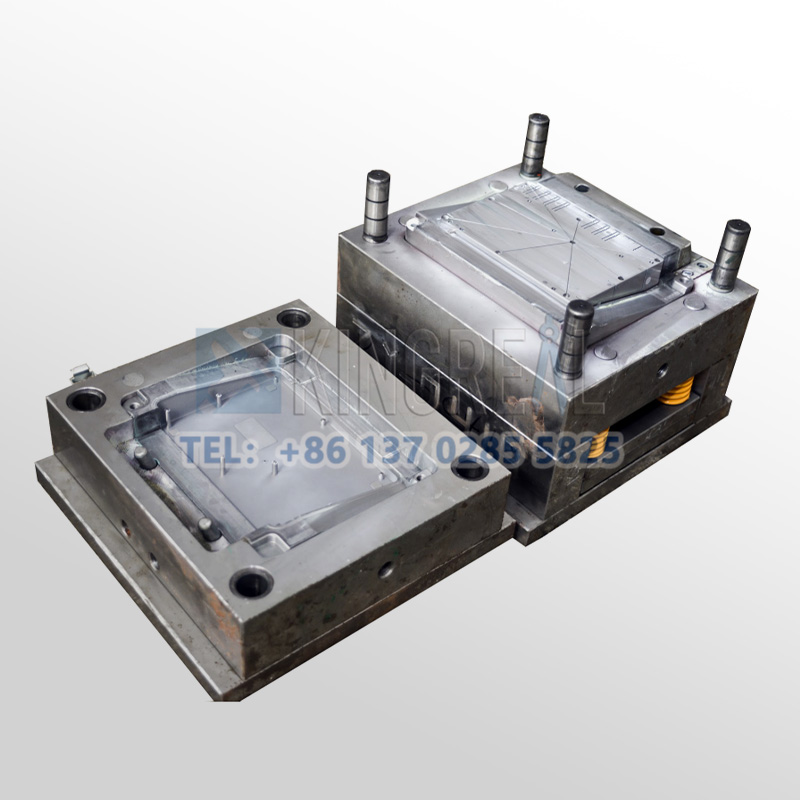 |
| 1 | Filling Stage of KRMOLD Plastic Injection Molds Process |
| 2 | KRMOLD Plastic Injection Molds Process Holding Pressure Stage |
| 3 | Cooling Stage of KRMOLD Plastic Injection Molding Apartment |
| 4 | KRMOLD Plastic Injection Molds Demolding Stage |
| 5 |
1. Filling Stage of KRMOLD Plastic Injection Molds Process
(1) Filling is the first step in the entire plastic injection molding cycle. The time starts from the plastic injection molds closing and plastic injection molding until the mold cavity is filled to about 95%. In theory, the shorter the filling time, the higher the plastic injection molding efficiency, but in practice, the molding time or injection speed is subject to many conditions.
(2) High-speed filling. During high-speed filling, the shear rate is significantly elevated. This shear thinning effect reduces overall flow resistance, thereby lowering the viscosity of the plastic. Additionally, local viscous heating contributes to a decrease in the thickness of the solidified layer. Consequently, in the flow control phase, the filling behavior primarily depends on the volume to be filled. Specifically, in this phase, high-speed filling leads to a considerable shear thinning effect on the melt, while the cooling effect of the thin wall remains minimal; thus, the rate effect becomes dominant.
(3) Low-speed filling. Low-speed filling is characterized by a low shear rate, high local viscosity, and substantial flow resistance, which are influenced by heat conduction. The heat conduction effect is more pronounced in this scenario because the rate of hot plastic replenishment is slow, allowing the cold mold wall to quickly extract heat. Moreover, due to the reduced viscous heating, the thickness of the solidified layer increases, resulting in higher flow resistance at the thinner wall. In front of the fountain flow, the polymer chains become oriented almost parallel to the wave front of the flow, a result of the fountain flow phenomenon. When the two plastic melts converge, the polymer chains at the interface align parallel to one another. Coupled with the differing characteristics of the two melts—such as variations in residence time within the mold cavity, temperature, and pressure—the intersection zone of the melts exhibits poor microscopic structural integrity. This can be visually identified when the parts are positioned at a suitable angle under light, revealing a distinct joint line—this is the mechanism behind weld mark formation. The presence of a weld mark not only alters the appearance of the plastic component but also tends to create areas of stress concentration due to its less dense microstructure, which ultimately weakens the part and increases the risk of fracture. In general, weld marks formed in high-temperature zones display better strength. Under such conditions, the polymer chains are more reactive, allowing them to intertwine and bond more effectively. Additionally, the temperatures of the two melts in high-temperature areas are closely matched, yielding similar thermal properties. Conversely, the strength of welds tends to be weaker in low-temperature regions. | 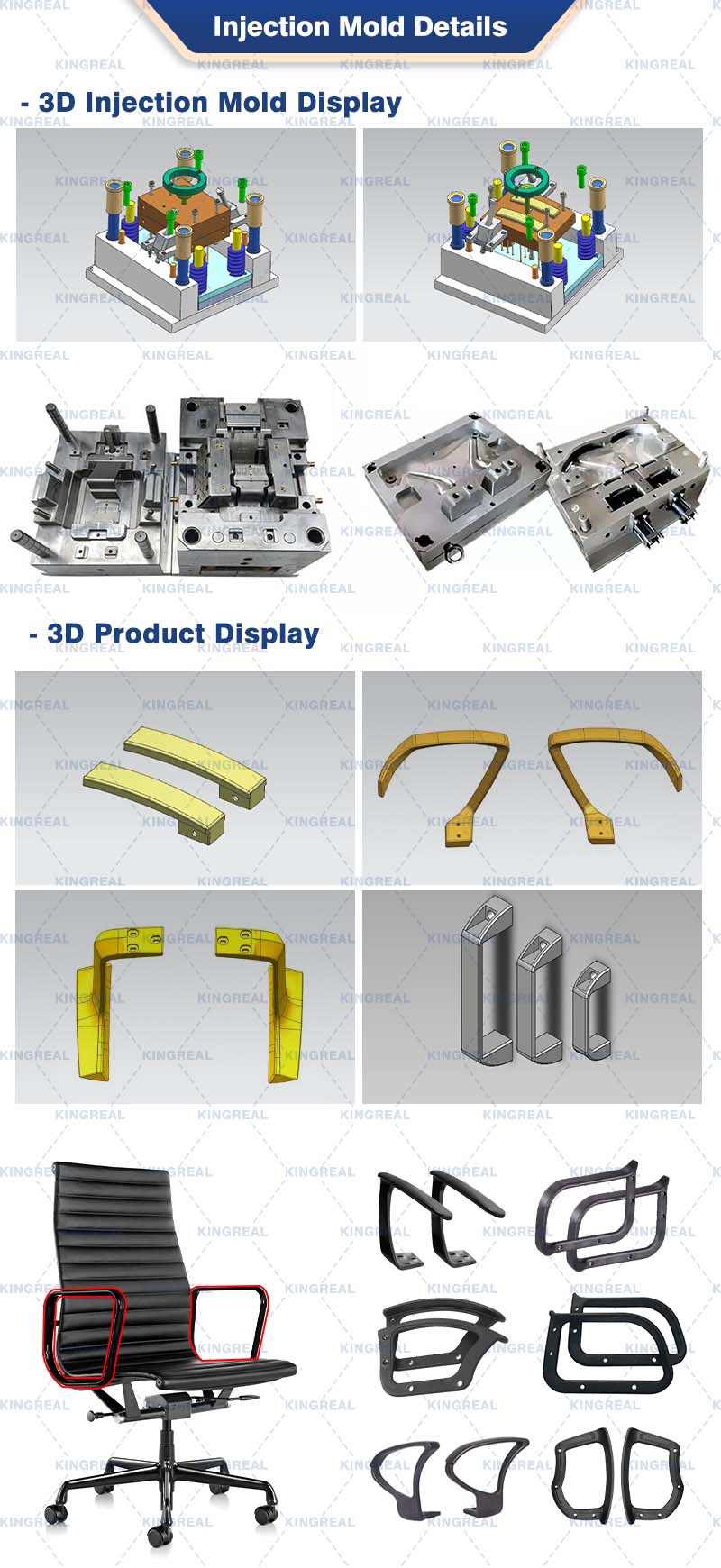 |
2. KRMOLD Plastic Injection Molds Process Holding Pressure Stage
The function of the holding pressure stage is to continuously apply pressure, compact the melt, increase the density of the plastic (densification), and compensate for the shrinkage behavior of the plastic.
During the holding pressure process, since the plastic injection molds cavity is already filled with plastic, the back pressure is high. During the holding pressure compaction process, the plastic injection molding machine screw can only move forward slowly and slightly, and the flow speed of the plastic is also relatively slow. The flow at this time is called holding pressure flow. Because in the holding pressure stage, the plastic is cooled and solidified faster by the mold wall, and the melt viscosity increases rapidly, so the resistance in the mold cavity is very large.
In the later stage of pressure holding, the material density continues to increase, and the plastic parts are gradually formed. The pressure holding stage should continue until the gate is solidified and sealed. At this time, the cavity pressure in the pressure holding stage reaches the highest value.
In the pressure holding stage, due to the high pressure, the plastic shows some compressible characteristics. In the high pressure area, the plastic is denser and has a higher density; in the low pressure area, the plastic is looser and has a lower density, so the density distribution changes with position and time.
During the pressure holding process, the plastic flow rate is extremely low, and the flow no longer plays a leading role; pressure is the main factor affecting the pressure holding process. During the pressure holding process, the plastic has filled the mold cavity, and the gradually solidified melt at this time serves as a medium for transmitting pressure. The pressure in the mold cavity is transmitted to the mold wall surface with the help of plastic, and there is a tendency to open the plastic injection molds, so an appropriate clamping force is required for clamping.
Under normal circumstances, the mold expansion force will slightly open the plastic injection molds, which is helpful for the exhaust of the plastic injection molds; but if the mold expansion force is too large, it is easy to cause burrs and overflow of the molded product, and even open the plastic injection molds. Therefore, when choosing a plastic injection molding machine, you should choose a plastic injection molding machine with a sufficiently large clamping force to prevent mold expansion and effectively maintain pressure.
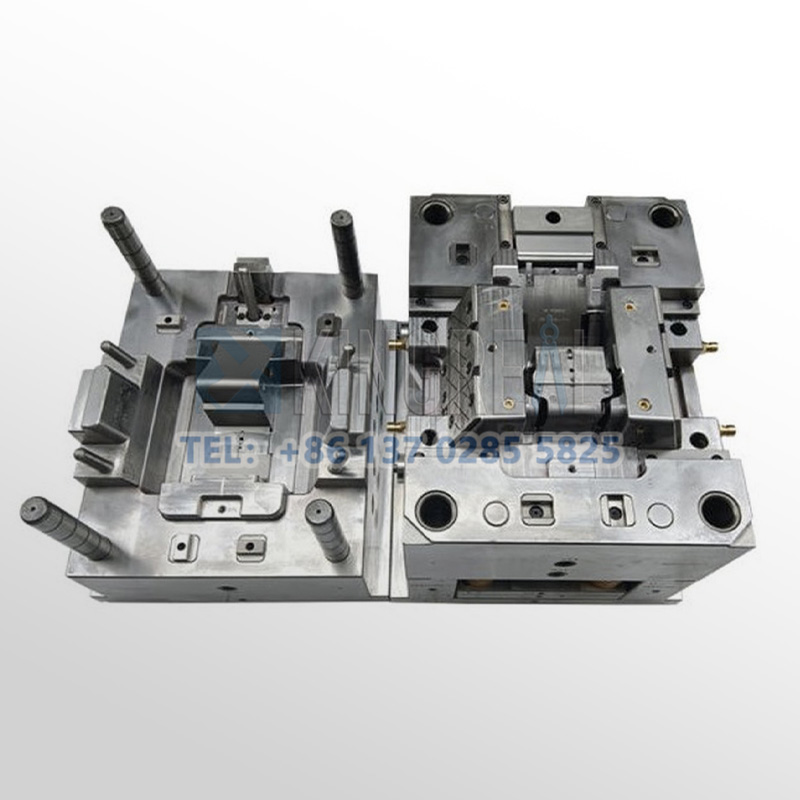
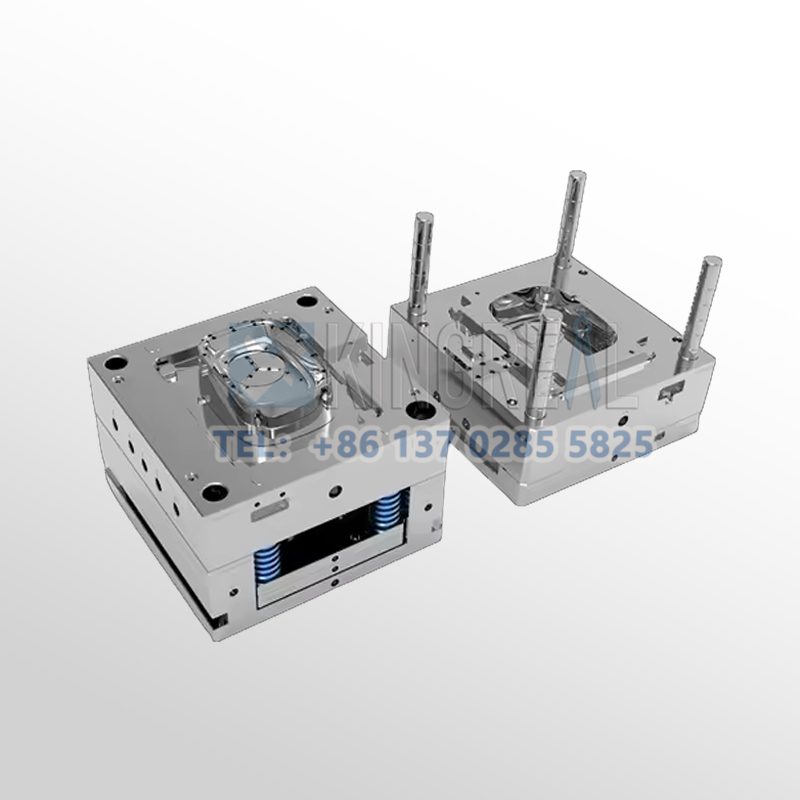
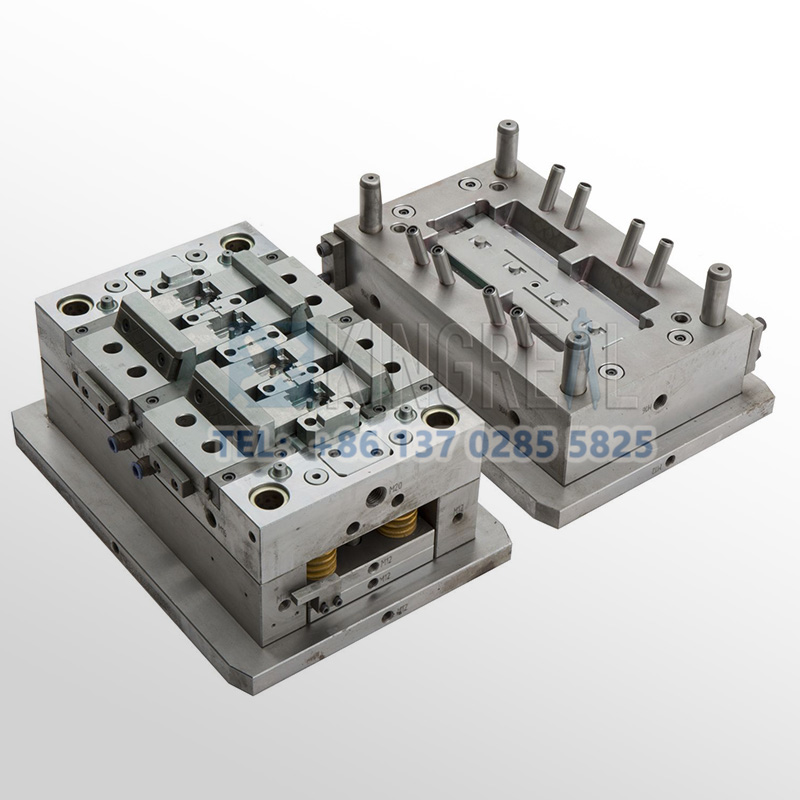
3. Cooling Stage of KRMOLD Plastic Injection Molding Apartment
In the plastic injection molds, the design of the cooling system is very important. This is because the molded plastic products can only avoid deformation due to external forces after cooling and solidification to a certain rigidity and demolding. Since the cooling time accounts for about 70% to 80% of the entire molding cycle, a well-designed cooling system can greatly shorten the plastic injection molding time, improve plastic injection molding productivity, and reduce costs. Improperly designed cooling systems will prolong the plastic injection molding time and increase costs; uneven cooling will further cause warping and deformation of plastic products.
Experiments show that the heat from the melt entering plastic injection molds is typically dissipated in two parts: 5% is lost to the atmosphere through radiation and convection, while the remaining 95% is conducted from the melt to the molds. The cooling water pipes within the molds facilitate the transfer of heat from the plastic product in the mold cavity to these pipes via conduction, afterwards, the coolant removes this heat through convection. Any residual heat that is not removed by the coolant continues to conduct within the mold and dissipates into the air upon contact with the external environment.
The cycle of plastic injection molding includes several stages: mold closing time, filling time, pressure holding time, cooling time, and demolding time. Notably, cooling time constitutes the largest portion, approximately 70% to 80%. Therefore, cooling time significantly influences both the duration of the molding cycle and the output of plastic products. During demolding, the temperature of the plastic product must be reduced to below its thermal deformation temperature to avoid relaxation due to residual stress or warping caused by external forces.
3.1 Factors affecting the cooling rate of the product are:
(1)Design of Plastic Products: Primarily, this relates to the wall thickness of the plastic material. In general, cooling time is proportional to the square of the thickness of the plastic product or to the 1.6th power of the maximum flow channel diameter. Thicker materials result in longer cooling times; for example, if the thickness doubles, the cooling time increases fourfold.
(2)Mold Material and Cooling Method: The cooling rate is heavily influenced by the materials used in the mold, including the core, cavity, and frame materials. A shorter cooling time enhances the heat transfer from the plastic per unit time, which is aided by higher thermal conductivity of the mold material.
(3)Configuration of Cooling Water Pipes: The closer the cooling water pipes are to the mold cavity, the larger their diameter, and the more numerous they are, the greater the cooling effect and the shorter the cooling period.
(4)Coolant Flow Rate: A higher coolant flow rate (typically preferred as turbulent flow) results in better convective heat absorption.
(5)Properties of the Coolant: The viscosity and thermal conductivity of the coolant also affect the thermal conductivity of the injection molds. Lower viscosity leads to higher thermal conductivity, which results in cooler temperatures and better cooling effects.
(6)Selection of Plastic: The thermal conductivity of the plastic determines how quickly it transfers heat from hot areas to cooler ones. Higher thermal conductivity or lower specific heat makes it easier for the plastic to change temperature, facilitating heat dissipation and reducing cooling time.
3.2 Design rules for cooling system:
(1)Uniform Cooling: The designed cooling channels must ensure rapid and uniform cooling.
(2)Purpose of the Cooling System: It should maintain effective cooling of the plastic injection molds. Cooling holes should use standard sizes to simplify processing and assembly.
(3)Determining Design Parameters: The mold designer must establish the location and size of cooling holes, their length, type, configuration, connection, along with the coolant's flow rate and heat transfer properties based on the wall thickness and volume of the plastic part.
4. KRMOLD Plastic Injection Molds Demolding Stage
Demolding is the last step in a plastic injection molding cycle. Although the product has been cold-formed, demoulding still has a great impact on the quality of the product. Improper demoulding methods may cause uneven force on the product during demoulding, deformation of the product during ejection, and other defects. There are two main ways of demoulding: ejector demoulding and stripper demoulding. When designing plastic injection molds, you should choose a suitable demoulding method according to the structural characteristics of the product to ensure product quality.
For plastic injection molds that use ejector demoulding, the ejector should be set as evenly as possible, and the position should be selected where the demoulding resistance is the largest and the strength and rigidity of the plastic part are the largest to avoid deformation and damage to the plastic part. The stripper plate is generally used for demoulding of deep-cavity thin-walled containers and transparent products that do not allow push rod marks. The characteristics of this mechanism are large and uniform demoulding force, smooth movement, and no obvious residual marks.
5. Advantages of Plastic Injection Molds
High Production Efficiency | Plastic injection molding achieves high production efficiency through several key factors. First, the use of automated machinery allows for continuous production cycles and minimizes downtime. These machines are designed to run at high speeds, injecting molten material into the mold cavity quickly. This results in shorter cycle times and higher output rates compared to manual or semi-automatic processes. In addition, plastic injection molding machines can be equipped with multiple cavities or plastic injection molds, allowing multiple parts to be produced simultaneously during each cycle. This further increases production efficiency by maximizing the machine's capabilities. In addition, the ability to use hot runners (channels that keep the material molten between the injection unit and the mold cavity) can reduce material waste and cycle time. |
Cost-effective Manufacturing Process | Plastic injection molding is a cost-effective manufacturing process due to a number of factors. First, the high production efficiency mentioned earlier results in lower labor costs for each part produced. The use of automated machinery eliminates the need for much manual labor, which reduces production costs. In addition, machines can run continuously with minimal supervision, further reducing labor costs. In addition, plastic injection molding minimizes the risk of human error, which can lead to part defects and rework. The automated nature of the process ensures consistent quality and precision, reducing the need for extra work or scrap material. This can save costs by eliminating the time and resources needed to correct defects. |
Versatility in Design and Material Selection | Plastic injection molding offers unparalleled versatility in design and material selection, making it suitable for a wide range of applications. The process can produce complex part geometries with intricate details that are difficult to achieve with other manufacturing methods. This is possible due to the ability to create molds with complex cavities and features. In addition, plastic injection molding supports a wide range of materials, including various thermoplastics and thermoset polymers. Each material has unique properties, such as strength, flexibility, or chemical resistance. Manufacturers can select the material that best suits their specific application, considering factors such as intended use, environment, and desired performance characteristics. |
Consistent Quality and Precision | plastic injection molding achieves consistent quality and precision in the parts produced through several key factors. First, the use of automated machinery ensures a controlled process that minimizes variations in part dimensions and features. These machines are programmed to follow precise instructions, producing parts that consistently meet exacting specifications. Additionally, plastic injection molding allows for tight tolerances, enabling the production of precision parts that fit seamlessly. The molds used in injection molding are designed with high precision to ensure that the geometry of the part is accurately replicated. This level of precision is difficult to achieve with other manufacturing processes. |
Reduced Waste and Environmental Impact | Plastic injection molding is an environmentally friendly manufacturing process that reduces waste and minimizes environmental impact. The process generates minimal scrap material because excess material can be recovered and reused. This reduces material costs and waste disposal expenses, making plastic injection molding a sustainable manufacturing solution. Additionally, the ability to use recyclable materials reduces the consumption of virgin resources, which promotes environmental sustainability. Many thermoplastics used in plastic injection molding can be recycled multiple times without significant degradation in performance. This reduces the need for new materials and helps promote a circular economy. |